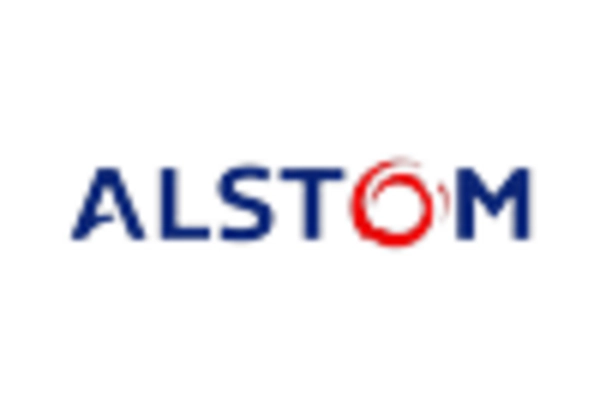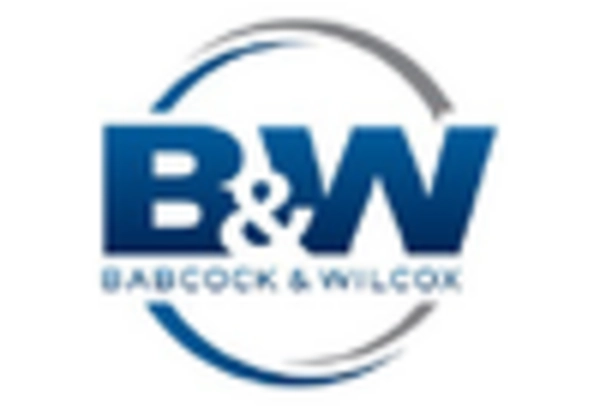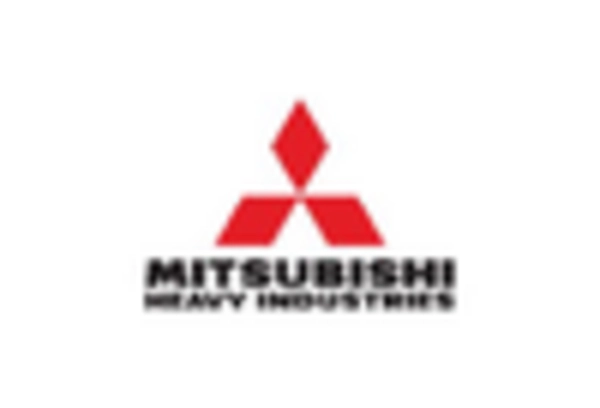Rising Energy Demand
The Dry Flue Gas Desulfurization System Market is also influenced by the rising global energy demand. As economies continue to grow, the need for energy production increases, leading to higher emissions of sulfur dioxide from fossil fuel combustion. This scenario necessitates the implementation of effective desulfurization systems to mitigate environmental impacts. According to recent data, energy consumption is expected to rise significantly in the coming years, prompting power generation facilities to adopt dry flue gas desulfurization systems. This trend not only addresses environmental concerns but also aligns with the industry's shift towards cleaner energy production. Consequently, the market for dry flue gas desulfurization systems is likely to expand as energy producers seek to balance demand with sustainability.
Technological Innovations
Technological advancements play a crucial role in shaping the Dry Flue Gas Desulfurization System Market. Innovations in desulfurization technologies, such as improved sorbent materials and enhanced process efficiencies, are driving the market forward. These advancements enable industries to achieve higher removal efficiencies of sulfur dioxide, thereby reducing operational costs and improving overall performance. The introduction of novel technologies, such as advanced monitoring systems and automation, further enhances the effectiveness of dry flue gas desulfurization systems. As industries strive for operational excellence and compliance with environmental standards, the demand for innovative desulfurization solutions is expected to rise, propelling market growth in the coming years.
Focus on Sustainable Practices
The Dry Flue Gas Desulfurization System Market is increasingly influenced by a growing focus on sustainable practices. Industries are recognizing the importance of reducing their carbon footprint and enhancing their environmental stewardship. This shift towards sustainability is driving the adoption of dry flue gas desulfurization systems, which are essential for minimizing sulfur dioxide emissions. Companies are investing in these systems not only to comply with regulations but also to enhance their corporate social responsibility profiles. The market is likely to benefit from this trend as more organizations prioritize sustainability in their operations, leading to increased demand for effective desulfurization technologies that align with their environmental goals.
Economic Incentives and Funding
Economic incentives and funding opportunities are emerging as significant drivers for the Dry Flue Gas Desulfurization System Market. Governments and financial institutions are increasingly offering grants, subsidies, and tax incentives to encourage the adoption of cleaner technologies, including desulfurization systems. These financial mechanisms lower the barriers to entry for industries looking to invest in advanced desulfurization technologies. As a result, more companies are likely to implement dry flue gas desulfurization systems to take advantage of these incentives, thereby fostering market growth. The availability of funding for research and development in this sector further supports innovation, ensuring that the market remains dynamic and responsive to evolving environmental challenges.
Increasing Environmental Regulations
The Dry Flue Gas Desulfurization System Market is experiencing a surge in demand due to stringent environmental regulations aimed at reducing sulfur dioxide emissions. Governments across various regions are implementing laws that mandate the installation of desulfurization systems in power plants and industrial facilities. For instance, regulations set by environmental agencies require a significant reduction in SO2 emissions, which has led to an increased adoption of dry flue gas desulfurization technologies. This regulatory landscape not only compels industries to comply but also drives innovation in desulfurization technologies, thereby expanding the market. The market is projected to grow as industries invest in advanced systems to meet these regulatory requirements, ensuring compliance while minimizing environmental impact.

















Leave a Comment